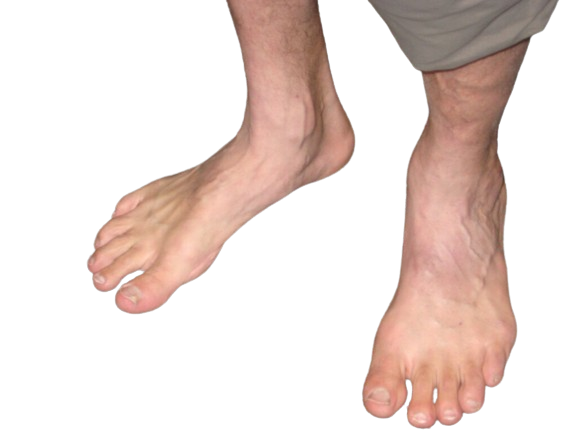
The barefoot running trend has emerged as a thriving subculture among runners, where enthusiasts opt to run sans shoes. Advocates argue that barefoot running enhances foot biomechanics and reduces injury risks. While some studies indicate a potential 4% improvement in running efficiency when going shoeless, there remains a scarcity of comprehensive research comparing injury rates between shod and barefoot runners.
Assessing the Advantages and Disadvantages of Running Without Shoes
Potential Benefits of Running Without Shoes
-
Strengthens foot muscles and gait
-
Reduces injury risks
Running without shoes can reduce injury risks for many people. When you run without shoes, you naturally adjust your stride to a lighter, more balanced step. This change can decrease the impact on your joints and reduce the likelihood of injuries. One of the key benefits is that it encourages a midfoot landing rather than a heel strike, which lessens the stress on your knees and ankles. Additionally, it can help strengthen the small muscles in your feet, making them more resilient and less prone to injuries. However, there are some disadvantages of barefoot running to consider. They offer less protection on rough or hard surfaces, which can lead to cuts or bruises. To enjoy the benefits of running without shoes while minimizing risks, start slowly and increase your distance gradually. Pay attention to how your feet feel and adjust as needed to avoid discomfort or injury.
-
Encourages proper technique
Shoeless running also encourages proper technique by making you more aware of how your feet hit the ground. When you run without shoes, you naturally adopt a lighter, more efficient stride. This adjustment can help improve your overall running form. One of the benefits of running without shoes is that it promotes a midfoot or forefoot landing rather than a heel strike, which reduces the impact on your joints and lowers the risk of injury. It also strengthens the muscles in your feet and legs, leading to better balance and stability. However, there are disadvantages of barefoot running to consider. They provide less protection on rough or hard surfaces, which can result in cuts or bruises. To fully enjoy these benefits, start with short distances on soft surfaces and gradually increase your mileage. Pay attention to any discomfort and adjust your technique as needed to ensure a safe and effective transition.
-
Improves balance and proprioception
-
Enhances connection to the ground
Potential Drawbacks of Running Without Shoes
-
Limited foot protection
Running without shoes offers many benefits, but it also has limited foot protection. When you choose this technique, you can feel every little detail of the surface beneath your feet. This helps improve your balance and enhances your connection to the ground. However, one of the disadvantages of barefoot running is that they provide less protection for your feet. Without the cushion and support of traditional shoes, your feet are more exposed to rough or sharp surfaces. This can lead to cuts, bruises, or other injuries. To enjoy the benefits while avoiding these risks, it’s important to start gradually. Run on soft, smooth surfaces at first, and slowly increase your distance as your feet get used to the new experience. Pay close attention to any discomfort and choose your running routes carefully to keep your feet safe while still reaping the rewards of running without shoes.
-
Increased risk of Achilles tendinitis and calf strain
When you run without shoes, it can increase the risk of Achilles tendinitis and calf strain. When you run without shoes, your feet and lower legs have to work harder. This change can put extra strain on your Achilles tendon and calf muscles, making them more likely to get injured. One of the benefits of running without shoes is that it strengthens your feet and improves your running form. However, this adjustment can also lead to overuse injuries, especially if you increase your running distance too quickly. It’s important to start slowly and gradually build up your mileage to give your muscles time to adapt. Pay attention to any pain or discomfort in your Achilles tendon and calves. While it offers many benefits, such as better balance and foot strength, it’s essential to be aware of the disadvantages of barefoot running. Proper preparation and caution can help reduce the risk of these injuries while still enjoying the benefits of running without shoes.
-
Potential for plantar pain and blisters
-
Initial discomfort and unfamiliarity
Transitioning to Barefoot Running: Tips for Success
Conclusion
By following these steps and paying attention to proper form and footwear selection, runners can safely explore the benefits of running without shoes or minimalist footwear while minimizing the risk of injuries. Start slowly, building up gradually to give your feet time to adjust. Begin with short walks on soft surfaces to toughen the feet, then introduce brief running intervals. Proper form is crucial, focusing on a light midfoot landing and avoiding excessive toe push-off. Pay attention to how your feet feel after each session, and stretch to maintain flexibility. Selecting the right minimalist shoes is essential; they should be lightweight with minimal heel cushioning. Gradually increase your running distance to prevent discomfort and injuries. By taking these precautions, you can safely enjoy the benefits of running without shoes while reducing the risk of injury.
1 thought on “Running Without Shoes”
Comments are closed.